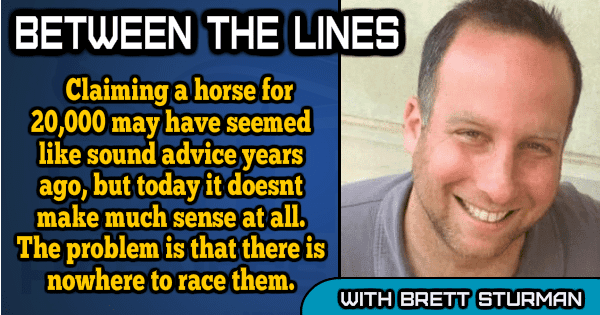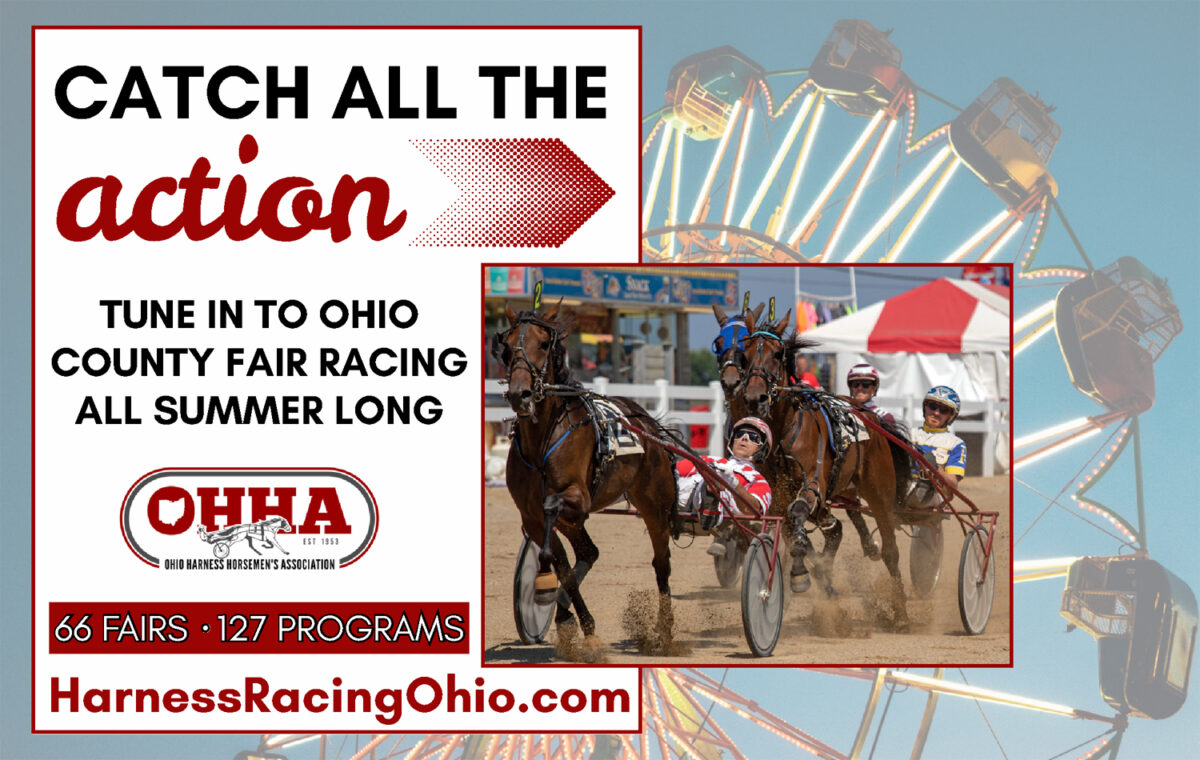The need for higher-end claiming races
by Brett Sturman
When I first took interest in this sport almost 20 years ago, someone once told me that you should never start off by claiming a horse for less than $15,000 or $20,000, but that horses around those amounts were good starting points. The logic was that anything less than $15,000 was too cheap stock and wouldn’t have been able to race at the Meadowlands at that time, and anything far greater than that would be too much of a risk for someone in the very beginning.
In those Meadowlands glory days where $15,000 claimers were the minimum amount allowed, claiming levels that began at $15,000 went as high as claiming handicap races for $150,000 to $200,000. Today in harness racing, not only are the $200,000 claims like Mumbo King and Nianimble long forgotten, but so have almost all claiming races above $25,000.
Claiming a horse for $20,000 may have seemed like sound advice years ago, but today it doesn’t make much sense at all. The problem is that there is nowhere to race them.
For obvious reasons, the purse structure at the Meadowlands today doesn’t entice claiming levels of much more than $7,500 so your $20,000 claimer could never race there (at least not in a claiming race), but what about other tracks that do have the purse levels to support it?
The PA tracks of Harrah’s Philadelphia and Pocono Downs seem like they could easily have higher-end claiming races, yet both of those tracks cap their claiming ladder at a $20 to $25,000 claiming handicap. If you were to claim a horse out of such a race your options are limited. You’d have to either enter the horse right back in at the same level and immediately risk losing him, or force the horse to race against often tougher high level conditioned foes; not an ideal circumstance for a modest claimer.
The caliber of horses competing at these tracks in the higher level non-winners races is seemingly good enough to card $40 to $50,000 claiming races, so why not give it a shot and give owners some more alternatives where to race their horses. Doing so would help spur new claiming activity, which is down across the board over the years.
To their credit, Yonkers is carding and racing a $40,000 claimer and a $50,000 claimer weekly. But even those levels are down from the $75,000 claiming level they had not too many years ago.
Take one of the hottest claims going right now, the classy 7-year-old gelding Beat The Drum. Here’s a horse that won a couple of $40,000 races at Yonkers in February and then shipped to the Meadowlands and beat Levy starter Great Vintage in an overnight race at the Meadowlands. After that it was back to Yonkers, but there was no place to put him in other than a $50,000 claiming race, so he won as the heavy favorite but was claimed. Since then, he most recently won last week for $50,000 but was again claimed and is now once again re-entered Saturday for the same $50,000. He’ll likely be claimed back.
These situations aren’t all bad for owners as there is a likely chance the horse will earn a good check and then can be done with the one week investment, but it limits the possibilities for others. Even if you did have a claiming horse worth $50,000, it’s tough to enter knowing this type of jammed in competition awaits.
Other tracks offer claiming conditions somewhere in the middle. Dover has a $25 to $30,000 claiming handicap (which interestingly goes for the identical purse that the Yonkers $50’s goes for) and WEG has claiming conditions into the $30,000 range as well. But the question remains: Back when the Meadowlands was running claiming races at every level imaginable their purse structure wasn’t much different than any of the other slot tracks running today, so why have the higher end claiming races given way to condition racing?
Some racing secretaries offer an “optional claiming” condition into races where eligibility is determined by recent earnings, but these upper level optional claiming don’t seem favorable for a claiming horse, either. Last Friday at the Meadowlands there was a N/W $15,000 L5 condition for trotters with an optional claiming price of $50,000. Montalbano Bi was claimed last out as a winner in an optional claim $30,000, but he never had a chance in this race. As the lone horse to be entered for a $50,000 tag, he was faced with the impossible task of racing against Jeff Gural’s Opulent Yankee, a horse that had just won the Preferred Handicap in 1:52.4 the race prior but that was eligible for the race because of the condition allowing horses nominated to the upcoming Shiaway St. Pat series to prep. Why even both mixing this condition and an optional claiming condition in the same race?
On top of the absence of places to race for $20,000 claimers and above, there should also be more claimers for younger horses. Perhaps its due to the many different types of sire stakes levels each state has, but it wasn’t too long ago that there were claiming opportunities for 3-year-olds (with a 50 per cent allowance) and 4-year-olds (with a 25 per cent allowance).
Younger horses don’t necessarily need to be stars to earn money, but what about the ones that are one step below being able to earn in the various sire stake races? Carding 3-year-old claimers for $15,000 or even 2-year-old claimers for $15,000 ($30,000 with a 100 per cent allowance) would give owners the chance to recoup some of their investment without having to race against horses dropping out of the best type of sire stake competition. Early in a horse’s career, even the N/W 1 and N/W 2 races often have horses that are killers. Carding claiming races for these younger horses would alleviate that problem.
Condition racing and even the same lower end claimers week after week become stale after a while. Opening the condition sheet back up with expanded claiming – especially on the higher end side – will help bring back a needed dynamic to racing.

















